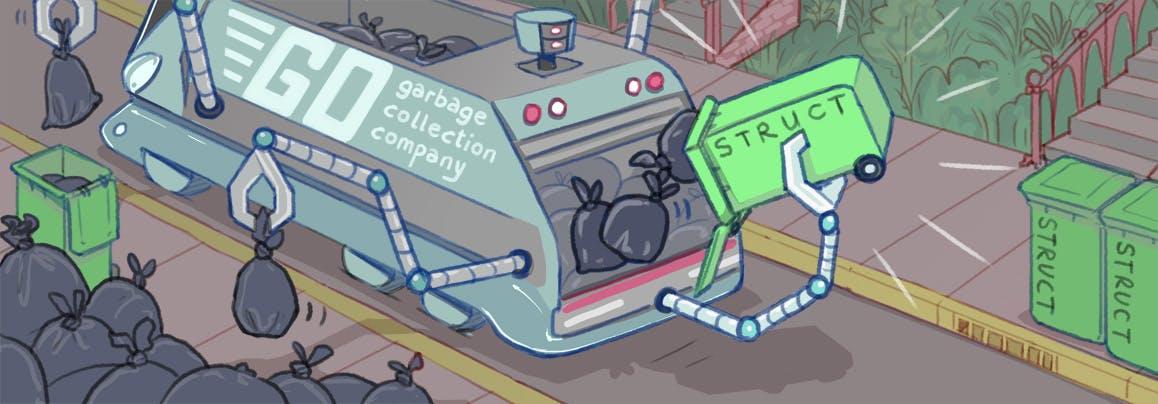
Blog
View all
Engineering
How to optimize garbage collection in Go
After publishing \\[a post about why we chose Go for CockroachDB](https://www.cockroachlabs.com/blog/why-go-was-the-right-choice-for-cockroachdb/), we received questions about how we deal with some of Go’s known issues — especially those related to performance, garbage collection, and deadlocks.

Jessica Edwards
September 26, 2023
System
Why Go was the right choice for CockroachDB
This post was originally published on November 3, 2015, the year Cockroach Labs was founded. Eight years and 85,670 GitHub commits later, it’s still absolutely true: Go was the “write stuff” for CockroachDB. The first question many developers ask us is what our experience has been writing a distributed database in Go, a garbage-collected language. JVM garbage collection is notoriously expensive, so wouldn’t we be risking CockroachDB’s performance by building it in Go? The fact is, when you’re building a high-performance distributed system you’ve only got a handful of languages to choose from, with C++, Java, and Go topping the list. Java’s known performance issues made it unappealing. And, though many of us spent our careers developing in C++, the effort required to build our own libraries further complicated the already daunting task of writing a distributed database. Next on the list was Go.

Jessica Edwards
September 26, 2023
System
Business Continuity vs. Operational Resilience: Why you need both (and how to get them)
The world is getting weird. Increasingly epic weather events, multiplying global geopolitical uncertainties, and stubborn economic stressors make for an exceptionally unpredictable business environment. To navigate this unfortunate but unavoidable “new normal”, enterprises need a strong but flexible foundation in both business continuity and operational resilience. Aren’t these basically the same thing? Nope. It’s a common misconception that operational resilience is the more or less automatic outcome of having solid business continuity planning in place. The two are intertwined but separate: Business continuity is planning how to respond, and then recover, in the event of a given disaster (CSP outage, DDOS attack, insert your own worst nightmare scenario here…). Operational resilience means proactively building in capabilities to ensure that, if said disaster does happen, it doesn’t affect you in the first place. And both are, in their own ways, essential for an organization’s survival and success.

Michelle Gienow
September 25, 2023
Company
Mercedes-Benz, Ericsson, Cockroach Labs to speak at KubeCrash
It’s my favorite time of year. The leaves are turning. The temps are dropping. The clusters are multiplying. Which can only mean one thing: KubeCon NA is just around the corner, bringing with it another edition of KubeCrash, the Chicago warm-up!

Lisa-Marie Namphy
September 25, 2023
Product
SQL cheat sheet for developers, with examples (2023)
Most SQL content on the web seems to be written with data analysts in mind. And that’s fine, but developers need SQL too! Your application is only as available and performant as your database, and solid database performance doesn’t just mean knowing how to INNER JOIN or SELECT *, it also means understanding monitoring and ops commands, using EXPLAIN ANALYZE, etc.

Charlie Custer
September 21, 2023
Company
How Mux built a multi-cloud signing keys system on Kubernetes & CockroachDB
In the media and streaming industry, downtime is simply not acceptable. From the infamous Game of Thrones outages, to celebrities “breaking the internet,” to fans missing critical moments of live sporting events, these types of scenarios really upset consumers. Mux specializes in delivering a platform for developers to build high-quality live and on-demand video streaming experiences. They are focused on delivering a great experience for their impressive list of customers, which means they need a reliable, fault-tolerant infrastructure. Since 2018, Mux has been building on CockroachDB and leverages a multi-region and multi-cloud setup to achieve high availability and fast performance for Mux Video. More recently, they built a new internal service on CockroachDB that allowed them to consolidate several signing keys systems into a unified global system. Not only does this internal service improve their own developers’ productivity, it also creates a better end-user experience by responding to distributed requests in real time.

Cassie McAllister
September 20, 2023
Design
Multi-cloud architecture: Three real-world examples from fintech
According to Gartner, by 2025 over 95% of new digital workloads will be deployed on cloud-native platforms. It makes sense – building with cloud-native technologies can shorten development cycles and increase operational efficiency. Not only do organizations want to build on a cloud-native foundation, but they also want to have the ability to move applications and data from one cloud computing environment (public and/or private) to another with minimal disruption – also known as cloud portability. This capability helps organizations increase resilience and avoid the risks associated with cloud concentration.

Cassie McAllister
September 13, 2023
Product
Getting to zero downtime: what's at the base of your app stack?
Reliability is your most important feature. It’s easy to get bogged down in the minutiae of planning, building, and shipping new product features. But at the end of the day, if your application isn’t available (or customers are turned away by a sluggish experience), none of those features matter.

Charlie Custer
September 7, 2023
System
Building a resilient order management system at scale with GCP
Having a reliable order management system (OMS) has always been critical to a wide variety of businesses – that’s been true since the days when taking an order or an appointment meant writing information onto a piece of paper with a rotary phone handset cradled between your ear and your neck. Most businesses are taking orders and appointments in a manner that’s much less manual and much more scalable these days, thanks to the help of third-party tools that can provide plug-and-play order management systems to handle sales, orders, inventory, appointments, and much more electronically. Life is easier, and business owners might even have less neck pain. But building those third-party systems is a high-stakes endeavour for modern tech businesses like Booksy, a global digital appointment booking service that makes it easy for customers to make appointments at beauty, health, and wellness salons. Booksy is a popular service that supported nearly 100 million bookings in 2021 across 25 different countries. But it had to overcome a massive challenge to reach that scale: modernizing outdated infrastructure while growing quickly – and without harming customer satisfaction. “Google Cloud and CockroachDB are the building blocks that we use to create a globally available platform.” - Paweł Sobkowiak, CTO, Booksy

Dan Kelly
August 31, 2023
Get started for free









